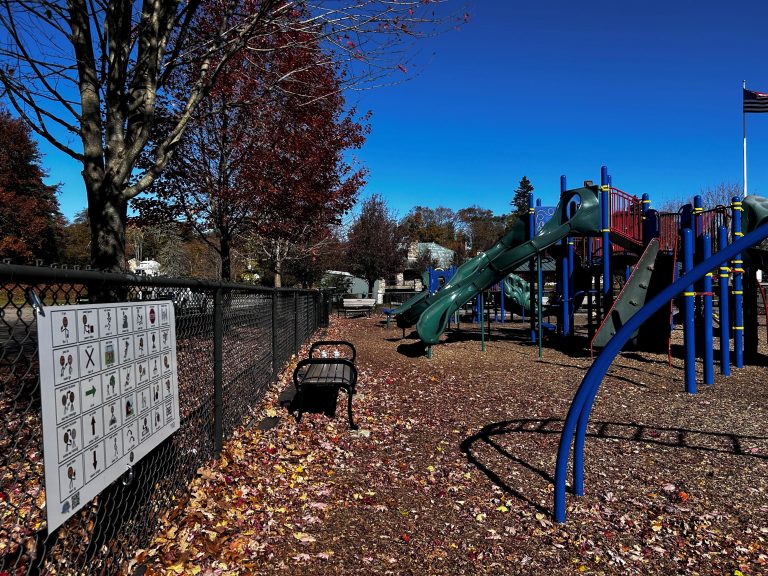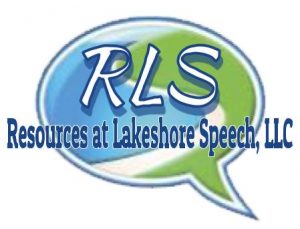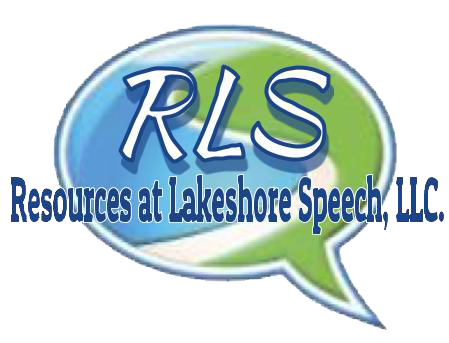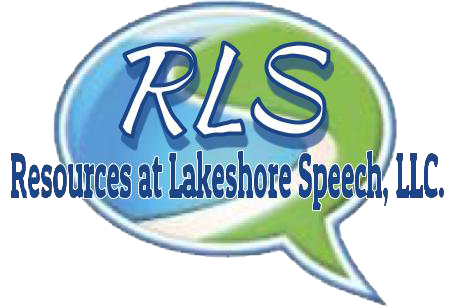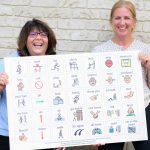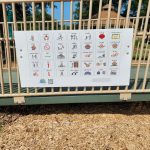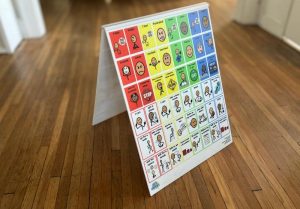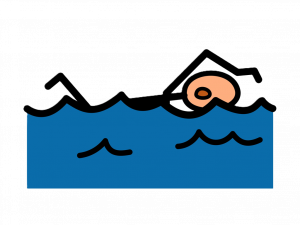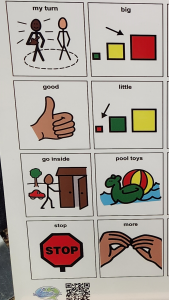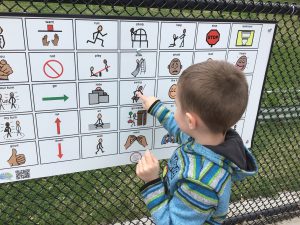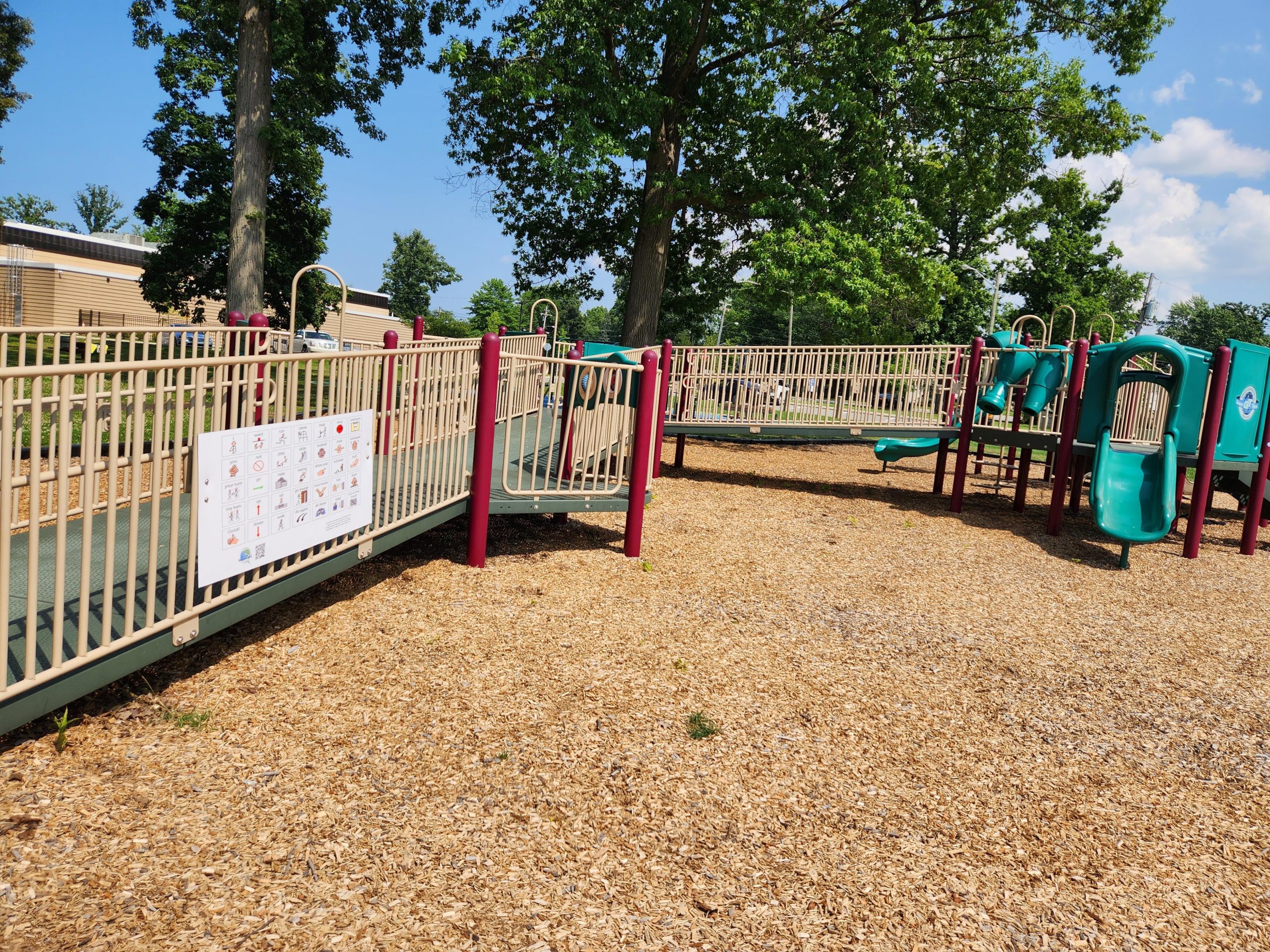
Playgrounds and pools are designed to be places of fun, community, and connection for children and families. However, for many children with disabilities, these spaces are not always truly inclusive. While efforts to improve physical accessibility have increased, accessibility must go beyond ramps and wide pathways—it must also address communication barriers. Parks & Recreation departments have a unique opportunity to lead the way in making public play spaces more inclusive by integrating communication tools, such as playground and pool communication boards, alongside other accessibility features.
The Expanding Definition of Accessibility
Traditionally, accessibility in parks and playgrounds has focused primarily on mobility needs—ensuring wheelchair access, installing rubber surfacing, and adding transfer stations to play structures. While these features are essential, they only address part of the inclusion equation. True accessibility considers the needs of all children, including those with communication challenges, sensory processing differences, and cognitive disabilities.
Children who use augmentative and alternative communication (AAC) often struggle to engage fully in public play spaces. Without accessible communication options, they may find it difficult to express their needs, participate in games, or interact with peers. By integrating communication boards and other visual supports into playgrounds and pools, local Parks & Recreation departments can create truly inclusive environments that welcome all children, regardless of their communication abilities.
Why Communication Boards Matter
Communication boards are static displays that feature symbols, words, or pictures that help individuals with communication differences express themselves. These boards often include core vocabulary words—simple but powerful words that can be combined to create messages (e.g., “go,” “stop,” “help,” “play”). When placed in playgrounds and pool areas, communication boards provide children with a reliable way to communicate their wants and needs.
Benefits of playground and pool communication boards include:
Encouraging Peer Interaction – Children of all abilities can use the boards to communicate, fostering inclusion and socialization.
Supporting Emotional Regulation – Kids can express feelings like excitement, frustration, or discomfort using simple symbols.
Enhancing Safety – Clear communication options help children convey concerns, such as feeling too hot at the pool or needing a break from play.
- Providing Independence – children with communication differences can participate in play activities without relying solely on caregivers to interpret their needs.
The Role of Parks & Recreation Departments in Inclusive Play
As the stewards of public parks, playgrounds, and pools, local Parks & Recreation departments play a crucial role in ensuring these spaces are welcoming for all families. Implementing communication boards as part of an overall inclusivity initiative demonstrates a commitment to meeting the needs of every child.
Here’s how Parks & Recreation departments can lead the charge in inclusive play:
1. Prioritizing Universal Design
Universal design ensures that public spaces are usable by people of all abilities, without the need for adaptation. Communication boards are a natural extension of universal design, making playgrounds and pools more navigable for children with communication challenges. Parks & Recreation planners should incorporate these tools in new park designs and retrofit existing spaces with communication supports.
2. Partnering with Speech-Language Pathologists and AAC Experts
Collaboration with speech-language pathologists (SLPs) and AAC specialists ensures that communication boards are designed with the most effective symbols and vocabulary. These professionals can provide guidance on selecting high-frequency words that support a range of communication needs. Parks departments can consult with local schools, therapy clinics, and advocacy organizations to create boards that are both functional and user-friendly.
3. Engaging the Community in Decision-Making
Community input is essential when developing inclusive playground initiatives. Parks & Recreation departments should seek feedback from parents of children with disabilities, advocacy groups, and special education professionals. Public meetings, online surveys, and pilot programs can help determine the best locations for communication boards and gather input on their design.
4. Securing Funding for Inclusive Features
Adding communication boards to playgrounds and pools is a cost-effective way to enhance accessibility, but funding is still a key consideration. Parks & Recreation departments can explore various funding opportunities, including:
- Grants from disability advocacy organizations
- State and federal funding for accessibility projects
- Partnerships with local businesses and nonprofits
- Crowdfunding and community fundraising campaigns
By actively seeking funding, Parks & Recreation departments can ensure that inclusivity initiatives remain a priority.
5. Implementing Communication Training for Staff
Even the best accessibility features are only effective if people know how to use them. Parks & Recreation staff should receive training on:
- The purpose of communication boards and how to model their use
- Basic AAC strategies to assist children who use communication devices
- Inclusive play practices to encourage interaction among all children
Providing staff with these skills helps create a more welcoming and supportive environment for families.
6. Raising Public Awareness About Inclusive Playgrounds
Public awareness campaigns can highlight the importance of communication accessibility and encourage the use of communication boards. Parks & Recreation departments can:
- Install signs explaining how to use the communication boards
- Create social media content showcasing inclusive playground features
- Host community events where families can learn about AAC tools
These initiatives not only promote accessibility but also foster a culture of inclusivity within the community.
Real-World Success Stories
Many communities across the country are already taking steps to enhance accessibility in their parks. For example:
- Lowell, Massachusetts – The city installed communication boards in all public parks and pools, creating a more inclusive environment for children who use AAC.
- Chicago, Illinois – Parks & Recreation officials collaborated with local schools to ensure playgrounds included both physical and communication accessibility features.
- Orlando, Florida – Through grants and private donations, the city expanded its inclusive playground initiatives, incorporating communication boards in major play areas.
These success stories demonstrate that with commitment and collaboration, Parks & Recreation departments can make a lasting impact on accessibility.
The Future of Inclusive Playgrounds
The movement toward inclusive play is growing, and Parks & Recreation departments are at the forefront of this change. By expanding their focus beyond physical accessibility and integrating communication tools, they can ensure that every child—regardless of their abilities—can fully participate in play and recreation.
Local governments have the power to transform playgrounds and pools into truly inclusive spaces. By implementing communication boards, training staff, engaging with the community, and securing funding, Parks & Recreation departments can set a new standard for accessibility. In doing so, they will create environments where all children can communicate, play, and thrive together.
Let’s Play!
If you’re a Parks & Recreation professional, an advocate for inclusive play, or a parent of a child who uses AAC, consider reaching out to your local Parks department. Advocate for the inclusion of communication boards in your community’s playgrounds and pools. Together, we can ensure that public spaces are welcoming, accessible, and inclusive for everyone.
